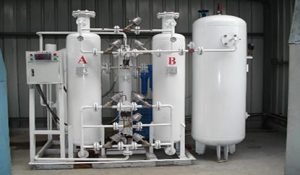Why We Use Molecular Sieve for PSA
Hydrogen Purification?
Pressure(high pressure and low pressure) Swing Adsorption (PSA) gas separation and purification technology became a production process and an independent unit operation process in large chemical industries, which was rapidly developed in the 1960s. On the one hand, with the world’s energy shortage, countries and industries are paying more and more attention to the development and utilization of low-grade resources, as well as the increasing demand for environmental pollution control, making adsorption separation technology increasingly important; on the other hand, since the 1960s, adsorbents have also made significant progress, such as the successful development of the excellent performance of molecular sieve adsorbent, activated carbon adsorbent, activated alumina and silica gel These have laid the technical foundation for the continuous operation of the large-scale adsorption separation process.
PSA hydrogen purification is a technology that uses the character of hydrogen and its lack of polarity and affinity for molecular sieve as a whole to purify contaminated gas streams. PSA technology has the advantages of high purity of hydrogen purification, economic and energy saving, easy operation, fast start-up and stoppage, high operational flexibility, easy maintenance, and low investment.
Traditionally, PSA hydrogen purification involves several sieve beds and four steps: adsorption, depressurization, regeneration, and epressurization. In this process, an hydrogen stream with impurities enters the sieve bed, where the molecular sieve will adsorb impurities selectively under pressure. After the adsorption step is completed, regeneration is accomplished by depressurizing the sieve bed, in this case, the affinity of the impurities is reduced and allows them to be discarded. Further purification of the sieve bed is achieved by purging with hydrogen purification to remove any residual contaminants. The adsorption process will repeat by pressurizing the sieve bed again, at the ssame time the sieve bed is run to allow hydrogen generation continuously.”
How Does 5A molecular Sieve Work in
Hydrogen Purification?
The 5A molecular sieve for the PSA plant is an alkali aluminosilicate; it is the Ca form of the type A crystal structure. 5A-type has an effective pore size of 5 Å (0.5 nm). It will adsorb molecules with smaller kinetic diameters of 5 Å and exclude those larger molecules. It is particularly suitable for PSA adsorber applications for the separation of n-alkanes and isoalkanes (C4 to C6 substances), PSA hydrogen purification, and oxygen concentrators.
In the PSA purification process, impurities present in the hydrogen are adsorbed onto 5A molecules under high pressure. Purified hydrogen is widely used in many industries and applications. Very pure hydrogen products can be obtained using the PSA hydrogen purification process.



